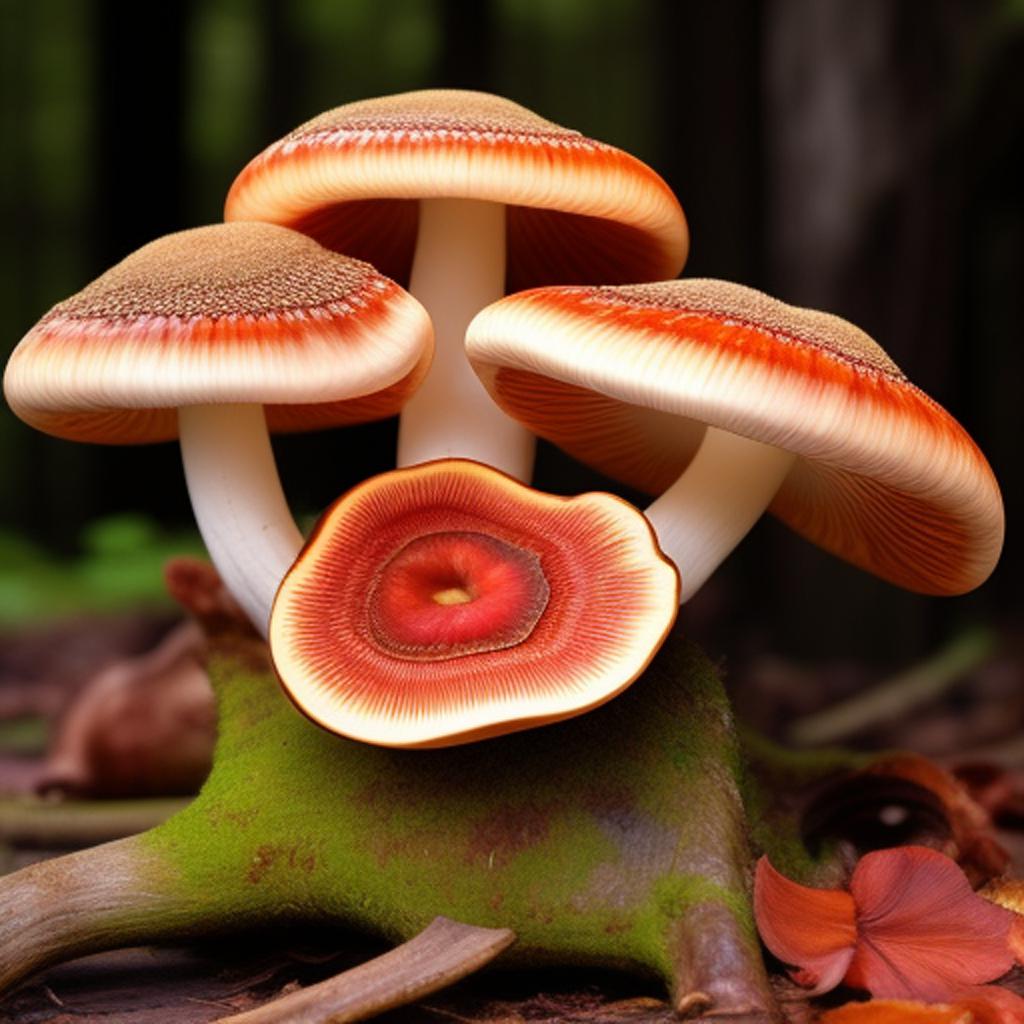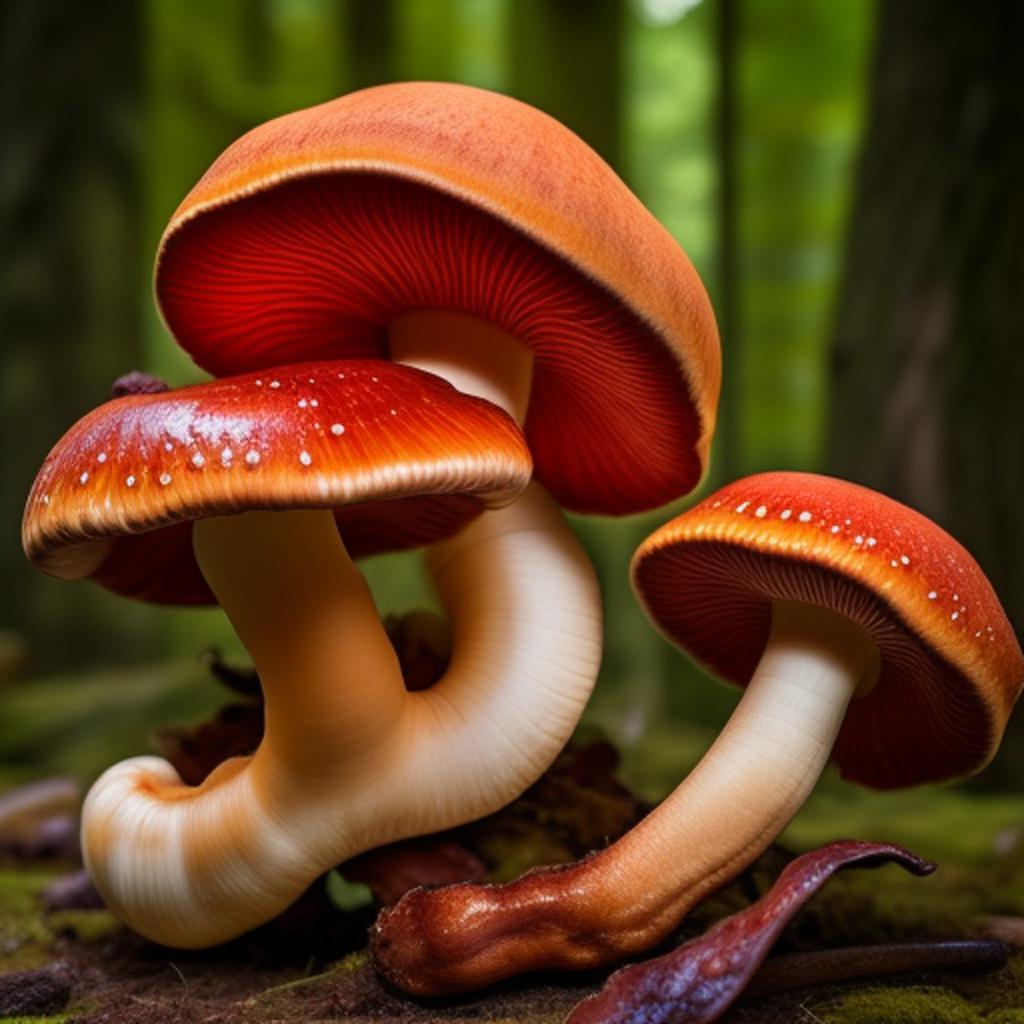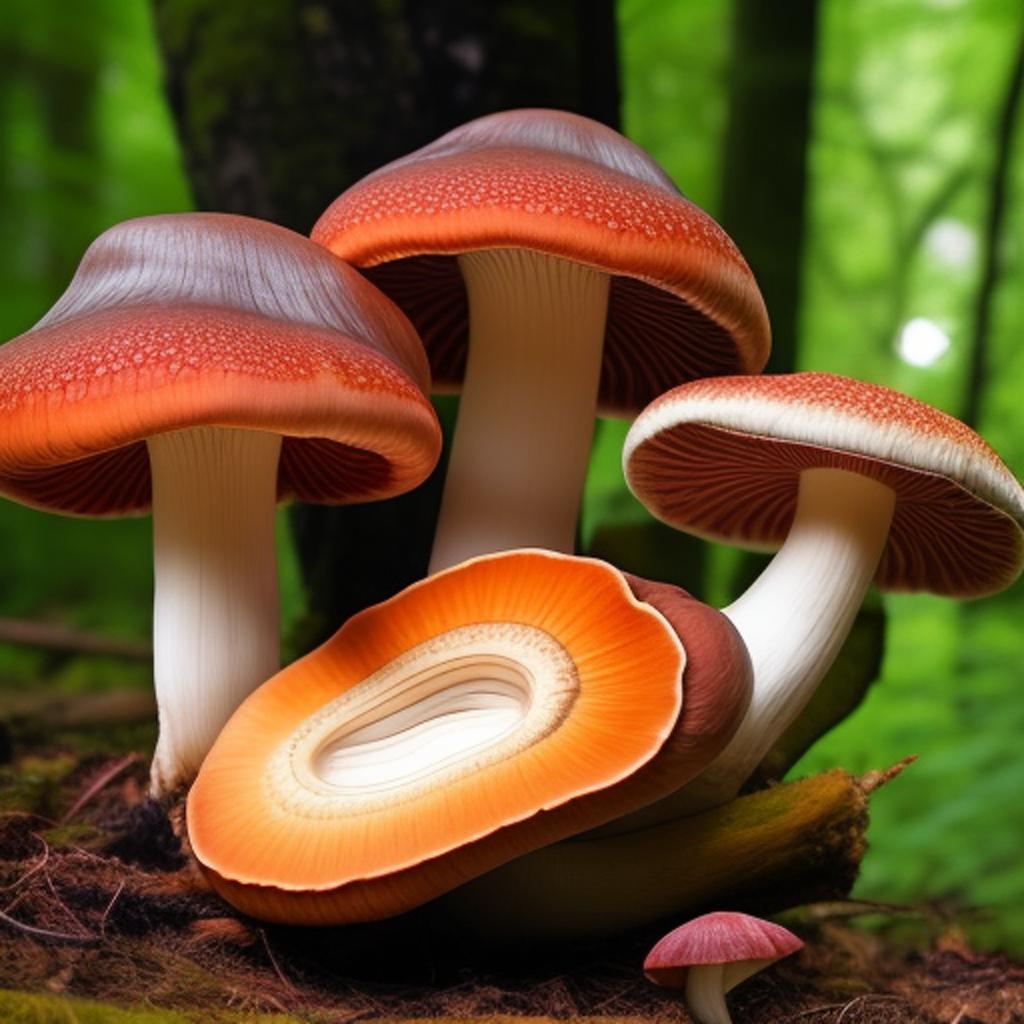Welcome to our guide on how to store mushroom spores! If you’re a budding mycologist or simply want to preserve your precious spore collection, it’s essential to know the best practices and tips for proper storage. In this post, we’ll explore everything from choosing the right containers to preparing the spores and storing them effectively. Get ready to unlock the secrets of long-term preservation and ensure the viability of your mushroom spores for years to come.
Choosing the Right Containers
Glass jars, plastic bags, and petri dishes are popular choices for storing mushroom spores. When choosing the right containers, it is important to consider factors such as airtightness, cleanliness, and ease of use. Glass jars provide an airtight seal that helps preserve the spores’ viability. Plastic bags offer convenience and are easy to clean. Petri dishes allow for efficient organization and observation of spore growth. Consider these factors when selecting the appropriate container for storing your mushroom spores.
Glass Jars
– Selecting the right size: Choose glass jars that are appropriate for your needs, ensuring they are large enough to accommodate the amount of mushroom spores you wish to store. Airtight lids are ideal for preserving freshness and preventing contamination.
Glass jars with airtight lids are the perfect choice for storing mushroom spores, as they preserve freshness and prevent contamination. To ensure viability, it is essential to thoroughly sterilize the jars before use. Adding a desiccant inside each jar helps control moisture levels, keeping the stored spores dry and mold-free.
– Ensuring proper sterilization: Before storing mushroom spores in glass jars, it is crucial to clean and sterilize them thoroughly. Wash the jars with hot soapy water, rinse well, and then use a disinfectant solution or autoclave to sanitize them. This step helps eliminate any potential contaminants that could compromise the viability of the spores.
– Adding desiccant for moisture control: To maintain optimal storage conditions for mushroom spores, consider placing a small bag of desiccant inside each glass jar before sealing it tightly. The desiccant will help absorb excess moisture and prevent mold growth while keeping your stored spore samples dry and viable.
Plastic Bags
Plastic bags are a popular choice for storing mushroom spores due to their convenience and affordability. When choosing plastic bags, opt for ones that are airtight and sealable to ensure maximum freshness. Using multiple layers of plastic bags provides extra protection against contamination. Additionally, including oxygen absorbers in the bags helps prevent the growth of unwanted organisms.
- Choose airtight and sealable bags.
- Use multiple layers for extra protection.
- Include oxygen absorbers to prevent contamination.
Petri Dishes
Opting for sterile prefilled petri dishes ensures a clean and controlled environment for storing mushroom spores. These airtight containers provide the necessary protection against contamination, preserving the integrity of the spores. Using parafilm or sealable plastic wrap as lid coverings adds an extra layer of security, preventing any external pollutants from entering the dish. Storing petri dishes in a temperature-controlled environment maintains optimal conditions for spore viability and longevity.
- Opt for sterile prefilled petri dishes.
- Use parafilm or sealable plastic wrap as lid coverings.
- Store petri dishes in a temperature-controlled environment.
Preparing the Spores for Storage

To ensure the long-term viability of mushroom spores, it is important to properly prepare them for storage. After harvesting the spores, it is crucial to clean and dry them thoroughly. This can be achieved by gently tapping the cap of the mushroom onto a sterile surface to release the spores, then using a sterilized brush or tissue to collect them. Once collected, allow the spores to air dry completely in a cool and dark area before transferring them into suitable storage containers.
Harvesting Spores
Identifying mature mushrooms is crucial for successful spore harvesting. Look for fully grown caps with open veils and well-developed gills. Using a sterile technique throughout the process ensures the integrity of your spore collection. Remember to sterilize your tools, work in a clean environment, and handle the mushrooms with care. Collecting spore prints is an effective method to preserve mushroom genetics. Place mature caps on white or dark paper and cover them loosely to allow air circulation. After 24-48 hours, remove the cap and carefully collect the deposited spores using a clean brush or knife blade.
Cleaning and Drying Spores
Removing debris and contaminants is crucial when cleaning spores. Use a soft brush or cotton swab to gently remove any dirt or foreign particles from the spore surface. Be meticulous in this process to ensure the purity of the spores.
Properly drying the spores is essential for long-term storage. Place them on a clean, dry surface and allow them to air-dry naturally. Avoid using heat sources as it may damage the spores’ viability.
To guarantee cleanliness for storage, work in a sterile environment with sanitized tools and containers. Wipe down surfaces with disinfectants before handling the spores, and use sterilized vials or jars for storing them securely. Prioritize cleanliness throughout each step of the process to maintain optimal conditions for your stored mushroom spores.
Storing the Spores
Using Desiccants is a crucial step in storing mushroom spores. Desiccants help remove moisture, preventing the growth of mold and bacteria. Silica gel packets or rice grains are excellent desiccants that can be placed inside storage containers to absorb any excess moisture.
Maintaining proper temperature and humidity levels is essential for long-term storage of mushroom spores. The ideal temperature range for storing spores is between 35-45°F (2-7°C) with a humidity level below 10%. Investing in a refrigerator specifically dedicated to spore storage can ensure optimal conditions are maintained.
Avoiding contamination is vital when storing mushroom spores. Always handle the spore prints or syringes with clean hands and sterilized equipment. Additionally, store the spores in airtight containers to prevent exposure to contaminants such as dust or other microorganisms that could compromise their viability.
Using Desiccants
When storing mushroom spores, it is crucial to choose the right desiccant. Silica gel packets are highly effective in absorbing moisture and preventing fungal growth. Ensure that you select desiccants specifically designed for food or pharmaceutical applications to maintain purity and quality.
Proper Packaging with Desiccants: To protect your mushroom spores from moisture damage, package them in airtight containers along with the appropriate amount of desiccant. Place the silica gel packet on top of the spores before sealing the container tightly. This will create a dry environment, preserving their viability and extending their shelf life.
Monitoring and Replacing Desiccants: Regularly monitor the condition of your stored mushroom spores by checking for any signs of moisture buildup or deterioration. If you notice any issues, promptly replace the existing desiccant with fresh ones to ensure continued protection against humidity-related damage.
Remember, choosing suitable desiccants, packaging properly using airtight containers with sufficient amounts of these agents, as well as monitoring and replacing them when necessary are key practices in effectively storing mushroom spores for long-term viability.
Maintaining Proper Temperature and Humidity
Ideal Temperature for Spore Storage: To maintain the viability of mushroom spores, it is crucial to store them at an optimal temperature range. The ideal temperature for spore storage is between 35°F (1.7°C) and 45°F (7.2°C). This cool environment helps to prevent the growth of contaminants and extends the shelf life of the spores.
Controlling Humidity Levels: Proper humidity control is essential for maintaining the quality and longevity of stored mushroom spores. Aim for a relative humidity level between 30% and 50%. Excessive moisture can lead to mold growth or clumping, while low humidity levels may cause desiccation and loss of viability.
Considerations for Long-Term Storage: When storing mushroom spores for an extended period, it’s important to ensure proper air circulation within their container or packaging. Utilize breathable materials such as paper envelopes or glass vials with permeable caps that allow gas exchange but prevent contamination from entering. Additionally, regularly check on your stored spore samples to monitor any signs of degradation or contamination over time.
Avoiding Contamination
Sterilizing Equipment and Containers:
- Thoroughly clean all equipment and containers before use to remove any potential contaminants.
- Use an autoclave or pressure cooker to sterilize equipment, ensuring that spores are not exposed to harmful bacteria or fungi.
Working in a Clean Environment:
- Create a dedicated workspace that is free from dust, dirt, and other potential sources of contamination.
- Regularly sanitize the work area using disinfectants appropriate for mushroom cultivation.
Handling and Transferring Spores Safely:
- Wear gloves and use sterile techniques when handling spore syringes or prints.
- Keep transfers as quick as possible to minimize exposure time.
Note: Avoiding Contamination is crucial in preserving the viability of your mushroom spores for future use. By following these best practices, you can ensure a higher success rate in storing your valuable spore collection safely.
Labeling and Organizing
Labeling and organizing your stored mushroom spores is essential for maintaining their viability and preventing mix-ups. Use clear, waterproof labels to mark each container with the species, date of collection, and any other relevant information. Additionally, create a system for categorizing spores based on their characteristics or intended use to make retrieval easier in the future.
In order to store mushroom spores for the long term, consider using airtight containers made of glass or plastic that are resistant to moisture and temperature fluctuations. It’s important to keep them in a cool, dark place away from direct sunlight or heat sources. Regularly check on your stored spores to ensure they remain dry and properly sealed in their containers.
Tips for Long-Term Storage

When storing mushroom spores for the long term, it is crucial to keep them in airtight containers. This will prevent moisture and air from affecting their viability over time. Additionally, store the containers in a cool and dark place to maintain optimal conditions for preservation.
To further protect your mushroom spores during long-term storage, consider using desiccant packs or silica gel packets inside the containers. These help absorb any excess moisture that may be present, reducing the risk of fungal growth or damage to the spores.
Remember to label each container with detailed information about the specific type of mushroom spores contained within. This will make it easier to identify and retrieve them when needed in the future.
By following these tips for long-term storage of mushroom spores, you can ensure their viability and maximize their shelf life until you are ready to use them for cultivation purposes.
What is the recommended temperature for storing mushroom spores?
Mushroom spores are delicate and sensitive to changes in temperature. Proper storage conditions are crucial to maintain their viability and ensure successful cultivation. The recommended temperature for storing mushroom spores is between 35°F (2°C) and 45°F (7°C).
Storing mushroom spores within this temperature range helps to preserve their genetic material and prevent degradation. Temperatures below freezing can damage the spores, leading to reduced viability and decreased chances of successful cultivation. On the other hand, temperatures above 45°F (7°C) can cause the spores to become less viable over time.
To achieve the ideal storage temperature, it is advisable to use a refrigerator specifically designated for mushroom spore storage. This ensures a stable and controlled environment for preserving the spores’ quality. It is important to note that storing spores in a regular refrigerator alongside food items may expose them to fluctuations in temperature due to frequent usage, which can negatively impact their viability.
Additionally, it is crucial to keep the spores in airtight containers, such as glass vials or plastic bags, to protect them from moisture and contaminants. Moisture can lead to spore clumping and fungal growth, rendering the spores unviable. Therefore, it is recommended to store the spores in a cool, dry, and dark place to minimize the risk of moisture exposure.
By adhering to these recommended temperature guidelines and proper storage practices, you can ensure the longevity and viability of mushroom spores, enhancing your chances of successful cultivation.
Labeling each container with detailed information about the specific type of mushroom spores is also important for easy identification and retrieval in the future. This will save you time and effort when you are ready to use the spores for cultivation purposes.
In summary, here are the key tips for long-term storage of mushroom spores:
1. Maintain a temperature range between 35°F (2°C) and 45°F (7°C) for optimal storage conditions.
2. Use a refrigerator specifically designated for mushroom spore storage to ensure a stable and controlled environment.
3. Avoid storing spores in a regular refrigerator alongside food items to minimize temperature fluctuations.
4. Store spores in airtight containers, such as glass vials or plastic bags, to protect them from moisture and contaminants.
5. Keep the spores in a cool, dry, and dark place to minimize the risk of moisture exposure.
By following these guidelines, you can ensure the viability and shelf life of your mushroom spores until you are ready to use them. Proper storage practices are essential for successful cultivation and maximizing the potential of your mushroom spores.
Is it possible to freeze mushroom spores?
Yes, it is possible to freeze mushroom spores. Freezing is a common method used to preserve the viability of mushroom spores for future use. The process involves placing the spores in a sterile container and then storing them in a freezer at a temperature below zero degrees Celsius.
To freeze mushroom spores, follow these steps:
1. Prepare a sterile container: Before freezing the spores, it is essential to ensure that the container is sterile to prevent any contamination. You can use glass vials or petri dishes that have been properly sterilized.
2. Collect the mushroom spores: To collect spores, you can either use a mushroom fruiting body that has matured and released spores naturally or perform a spore print. A spore print is created by placing the cap of a mushroom on a piece of sterile paper or glass and allowing the spores to drop and accumulate.
3. Transfer the spores to the container: Once you have collected the spores, transfer them carefully into the sterile container. Avoid any contact with non-sterile surfaces or contaminants, as this may reduce the viability of the spores.
4. Seal the container: Ensure that the container is tightly sealed to prevent moisture from entering, as excessive moisture can damage the spores during freezing.
5. Place the container in the freezer: Put the sealed container with the spores into the freezer. It is recommended to set the temperature below zero degrees Celsius (-18°C or 0°F) to ensure the best preservation of the spores.
6. Label and date the container: It is important to label the container with the type of mushroom spores and the date of freezing. This will help you keep track of the spores and their viability over time.
7. Monitor the freezer temperature: Regularly check the temperature of the freezer to ensure it remains below zero degrees Celsius. Fluctuations in temperature can reduce the viability of the spores.
8. Thawing the spores: When you are ready to use the spores, thaw them slowly in a controlled environment. Avoid sudden temperature changes, as this can damage the spores.
Freezing mushroom spores can extend their shelf life for several years, allowing you to store them for future cultivation projects. However, it is important to note that not all mushroom species have the same level of viability after freezing. Some species may not survive the freezing process, while others may have reduced viability. It is recommended to research the specific mushroom species you are working with to determine the best storage method.
In conclusion, freezing mushroom spores is a viable option for long-term storage. By following the proper procedures and maintaining the right temperature and conditions, you can preserve the viability and shelf life of your mushroom spores until you are ready to use them. Happy cultivating!
Is it necessary to keep mushroom spores in a cool, dark place?

When it comes to storing mushroom spores, keeping them in a cool, dark place is highly recommended. This practice is important to maintain the viability and quality of the spores over an extended period of time. Let’s delve into the reasons behind this recommendation.
Firstly, temperature plays a crucial role in preserving the potency of mushroom spores. High temperatures can cause spores to degrade, lose viability, or even die off completely. By storing spores in a cool place, ideally between 35°F and 45°F (2°C and 7°C), you can help prolong their lifespan and ensure their long-term viability.
Furthermore, exposure to light can also impact the quality of mushroom spores. Light, especially direct sunlight, can lead to the degradation of the spores and reduce their viability. Keeping spores in a dark environment shields them from harmful light exposure, thus maintaining their quality and potency.
To maintain these optimal storage conditions, it is advisable to use airtight containers that can protect the spores from moisture and outside air. Moisture can lead to the growth of mold or other contaminants, while exposure to air may cause the spores to become less viable over time.
It is worth noting that different types of mushrooms may have specific storage requirements. Some mushroom spores might require lower temperatures or specific humidity levels for optimum preservation. It is always recommended to refer to the specific instructions or guidelines provided by reputable suppliers or mycology experts for storing particular mushroom spores.
In conclusion
Conclusion
In conclusion, proper storage of mushroom spores is crucial for maintaining their viability and ensuring future cultivation success. By labeling and organizing your spore samples accurately, you can easily access the desired strain when needed. Additionally, following tips for long-term storage such as using airtight containers and storing in a cool, dark place will help preserve the quality of your spores for an extended period of time. With these best practices in mind, you can confidently store your mushroom spores and enjoy successful cultivation journeys.
